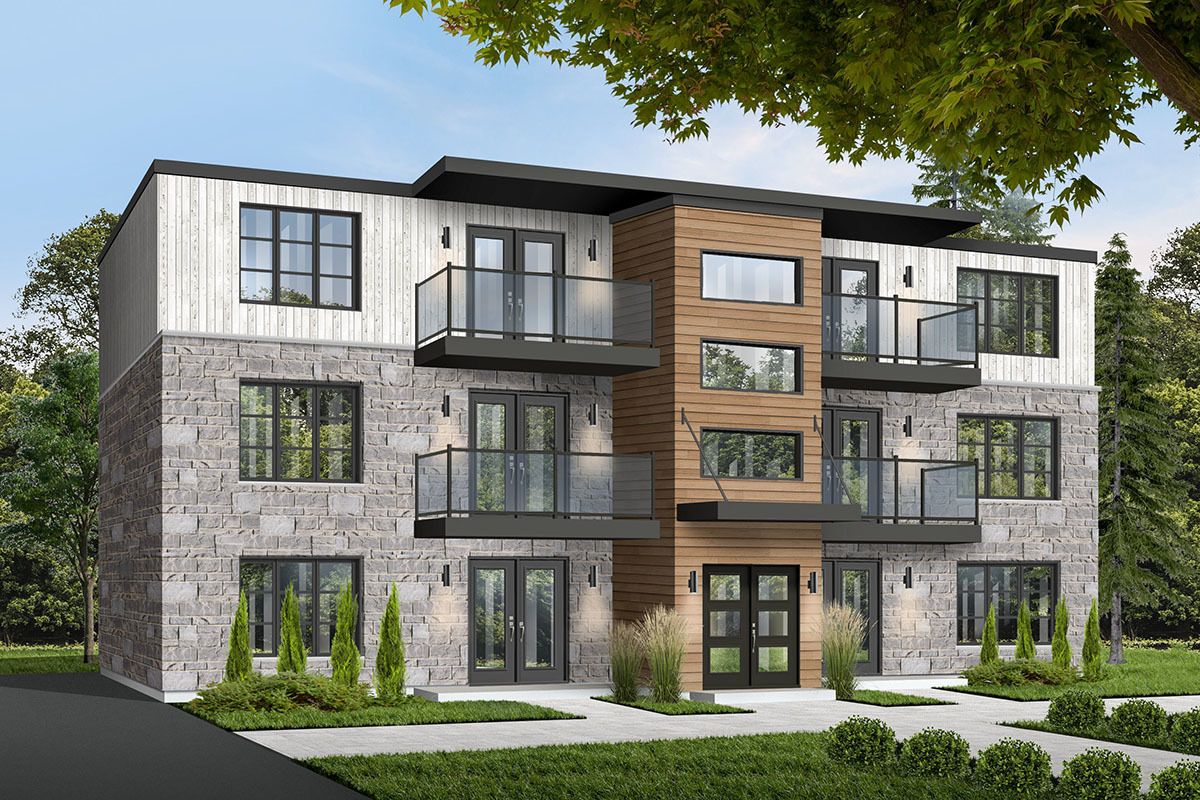
- June 3, 2021
- Effective Building
- 0
Trees near the structures can obstruct the property. In addition, it can cause a hazard to your home as it can damage the foundation and be prone to termites and other pests.
In this post, you’ll learn the considerations if you want to plant trees near your area. You’ll also learn how to prevent termites from entering your property if the trees are already infested with these pests.
Tree Planting Around the Area
It’s important to have careful planning before urban tree planting and regular tree inspection and pruning. Doing this can prevent the issue of planting trees near buildings.
The roots of street trees can cause cracking of roads, pavements, and water pipes. Urban trees can also cause structural damage to the foundation level of the building due to their roots. These are also risky because of the falling of whole trees or branches.
By careful species choice and maintenance and correct tree planting methods, such problems can be minimised. This is because you can determine the optimal location for the species and ensure enough space for rootball expansion.
Background of Tree Planting
Trees are among the most significant and permanent features in our towns and countryside. Tree planting can enhance the appearance of development while providing rich habitats for a range of wildlife.
During the summer months, trees can also provide cooling and shading. Tree planting helps to reduce the energy required for air conditioning systems and provides shelter from winds and rain during the cold months.
In urban areas, trees can improve the quality of the environment in several ways. For example, trees absorb noise and pollution, provide privacy, provide oxygen and moisture, and can help stabilise the land.
It’s essential when shrubs or trees are planted to take care of the siting, selection, and planting of shrubs and trees. In addition, a hedge or tree shouldn’t threaten any building or cause a nuisance that could result in the loss of the three and damage to the structures or buildings.
Practical Considerations During Tree Planting
To obtain the long-lasting and maximum benefit from trees in urban areas, it is essential to include a broad range of people in the design process. Thus, tree planting should be considered by the local community, developers, local authority planners, highway engineers, arboculturalists, park managers, landscape architects, and ecologists.
Care was taken in choosing the cultivars and species to be planted and where they are to be planted is very important. The following points should be considered:
- Ensure that the site conditions are good for the trees to be planted. Trees that experience disease or stress as a result of climate change should be avoided.
- Shrubs or trees should be planted to obstruct the public right of way, footpaths, inspection areas, and highways. Trees should not affect occupants of neighbouring buildings.
- The tree roots can damage the foundations or drainage of buildings when planted too close. It’s recommended to consider planting a climber or wall shrub in such situations.
- Ensure there is enough room for trees to develop and grow. The position of overhead wires, roofs, windows, proximity to walls, and future inspection and maintenance requirements should be considered.
Termite Infestations Due to Trees Around the Property
Most homeowners experienced termite infestations in the wooden structures of their homes. These include attics, floors, wood frames, and support beams behind drywall.
However, did you realise that the termites in trees can also be a real problem? This happens most especially if termites make their way from trees to your home and other wooden structures.
Termites in Trees
In this section, you’ll learn about the signs of termites in trees, including termite holes in tree branches and trunks. You’ll also learn what to do if trees on your property are home to a termite infestation.
Types of Termites
Dry wood and subterranean are the two main types of termites that can cause problems in people’s homes.
Drywood Termites
Drywood termites don’t require much moisture to survive. Therefore, they can thrive within the drier woods found in attic spaces, hardwood floors, or higher-up areas of the home.
These termites tend to live in much smaller colonies and cause less invasive damage than subterranean termites. However, drywood termites can still make their homes outdoors in dead trees or other sources of dry wood.
Subterranean Termites
Subterranean termites live in huge colonies that number in the hundreds of thousands to millions. These can cause extensive damage as they eat their way through a house, fence, garage, or other structure.
Risks of Termites in Trees
In certain settings, termites can be beneficial as it recycles decaying or fallen trees and stumps, which create room for new growth.
In a wild forest setting, termites are a part of the natural cycle of life, death, and regrowth. However, termites can infest a tree on your property in an urban setting, which provides them with a pathway to your home, garage, or other wooden structure.
As the colony attacks the healthy tree, the termites destroy a valuable source of shade and beauty. In addition, this creates the danger of falling limbs or even an entire free that could fall, which could damage your property, harm your family, or create liability issues.
Once these termites finish consuming the tree, they will move to your house, fence, or garage.
So, how can you tell if you have termites in your trees?
Signs of Termites in Trees
Seeing termite holes in trees means that you have termites living in the trees on your property. You can also spot some wood shavings at the site of the holes or fallen around the base of the tree.
To check for termites, use a spade or shovel to dig around the tree’s roots and look for the insets, which look like large, winged ants. You don’t need to dig deep. Subterranean termites are just beneath the soil surface.
Other signs of termites in trees include:
- Clusters of small, white eggs in the soil around the base of the tree.
- Discarded wings or evidence of dead termites in the soil around the base of the tree.
- Mud tubes on the branches or trunks of the tree.
What to Do If There Are Termites in Your Trees?
If you spot signs that indicate a termite infestation in the trees nearby, it’s time to call a professional. The sooner the termites are removed, the less risk there is on your home.
How to Prevent Termites on Your Property?
To prevent termites from moving in or returning to the trees, you must keep tree maintenance.
Do this by removing the dead or decayed limbs, stumps, and trees on your property from time to time. Ensure that the wood is burned or hauled off to ensure the termites are gone.
Yearly building and termite inspections are also good, especially if you experienced termite infestations and know that there are trees or other portions of the property prone to pests.
Trust Effective Building & Consultancy For Your Home and Termite Inspection Needs
If you plan to plant trees near your property, Effective Building & Consultancy can advise on the requirements for large species trees adjacent to the buildings. You can also consult us about which part of the property is the best location for tree planting to avoid affecting building inspection in the future.
On the other hand, if you suspect a termite infestation in your trees, you can call our building and termite inspectors to make a thorough inspection, diagnose the problem, and recommend the best solution for getting rid of the colony.
Whether termites are in your trees or your home, Effective Building & Consultancy can take care of the problem and take measures to prevent future infestations.
For more information about our building inspection services, visit our Help Centre.
Suppose you are planning to work on multi-story units. In that case, you may find yourself wondering if you should Read more
Technology continues to evolve at an exponential pace, and there are many tools, systems, and services that need to understand Read more
Where does pre-purchase building inspection come into play? Imagine this scenario: You just bought a new home. However, your dream-come-true Read more





